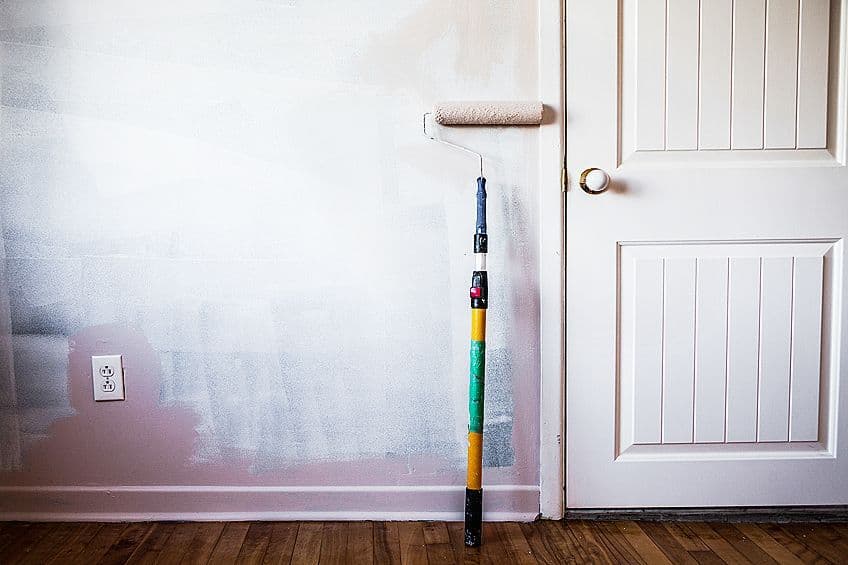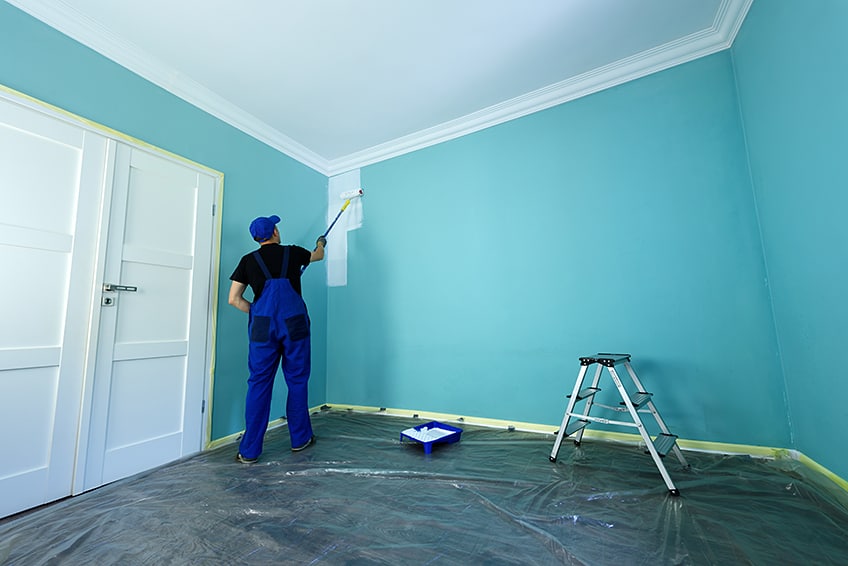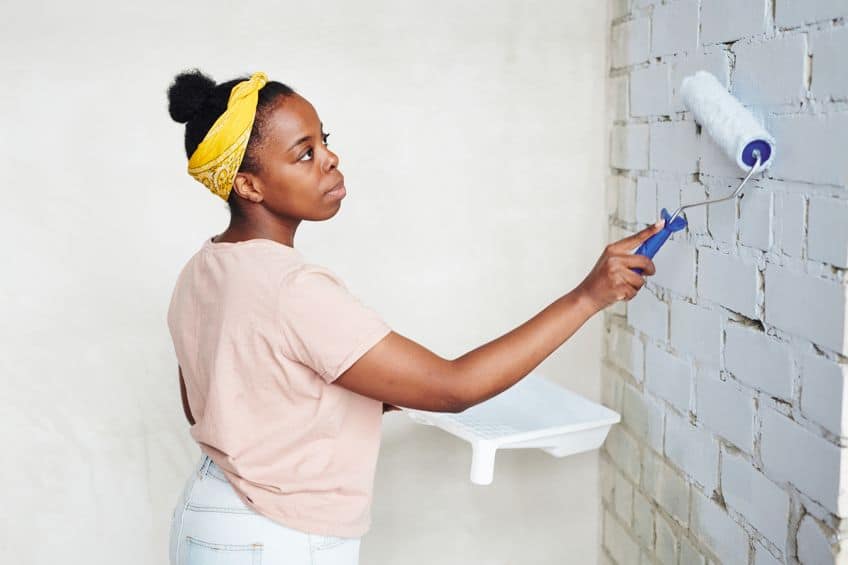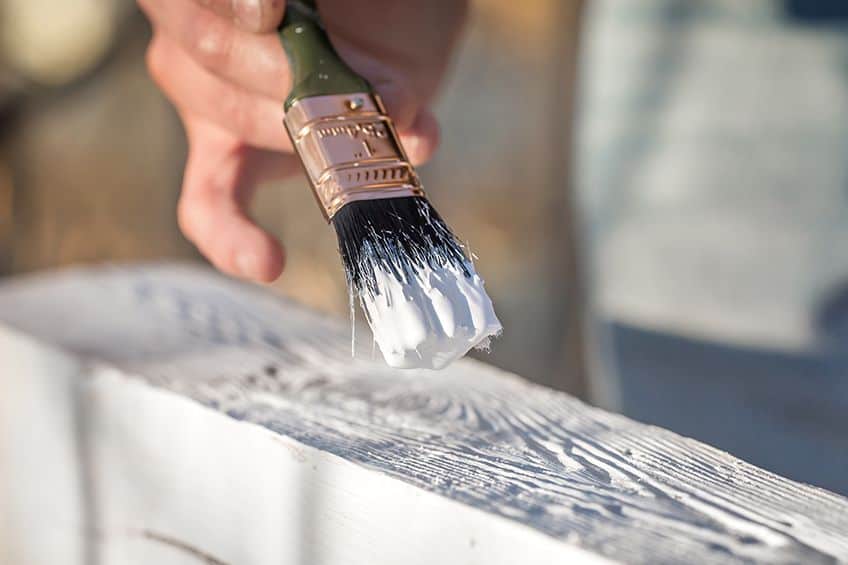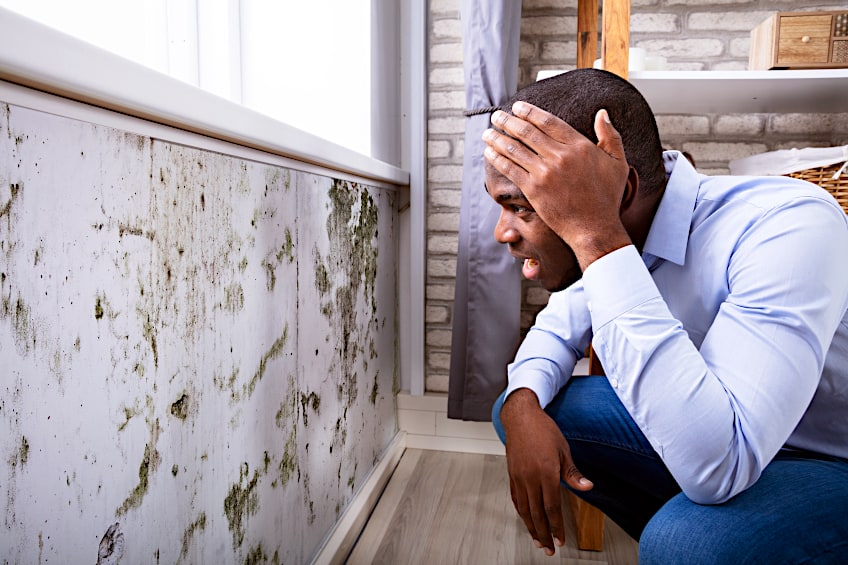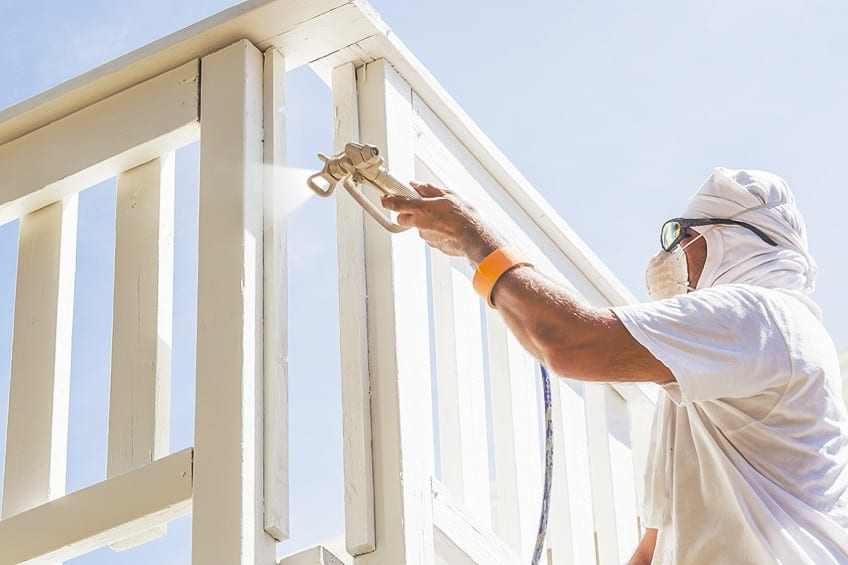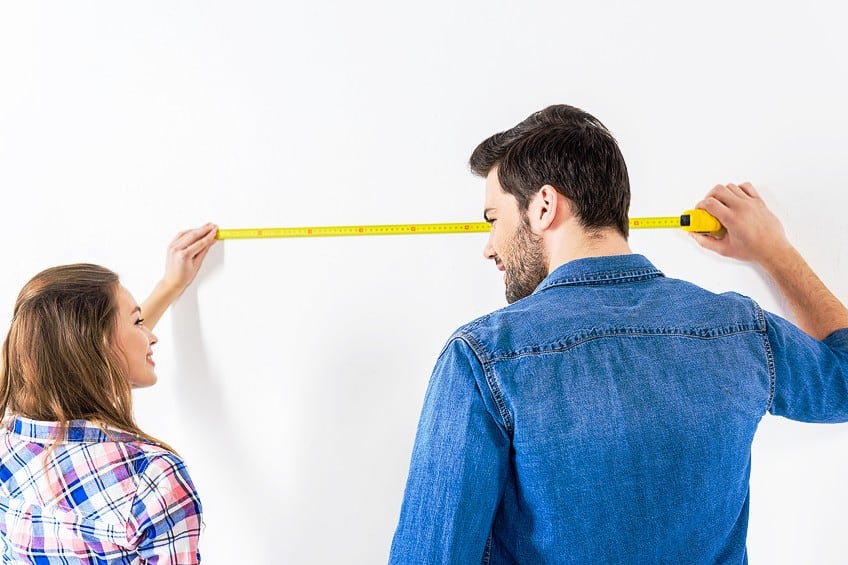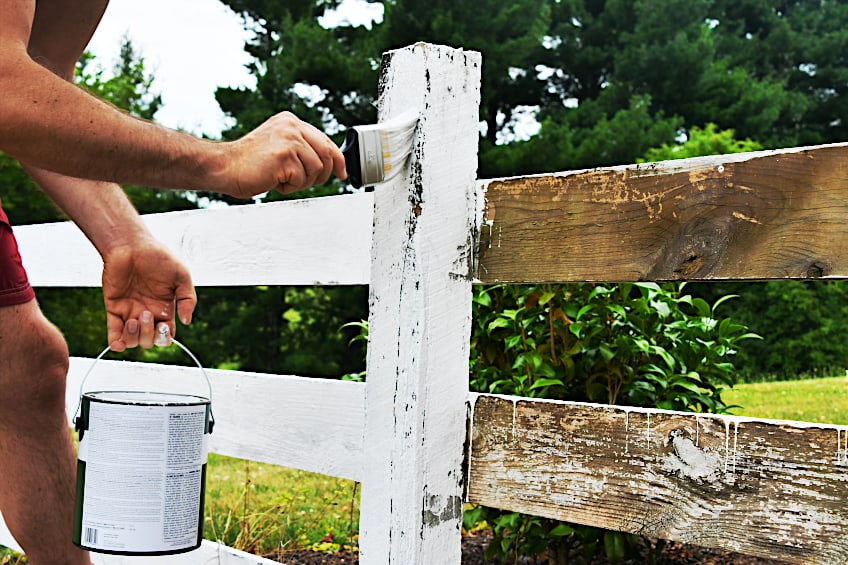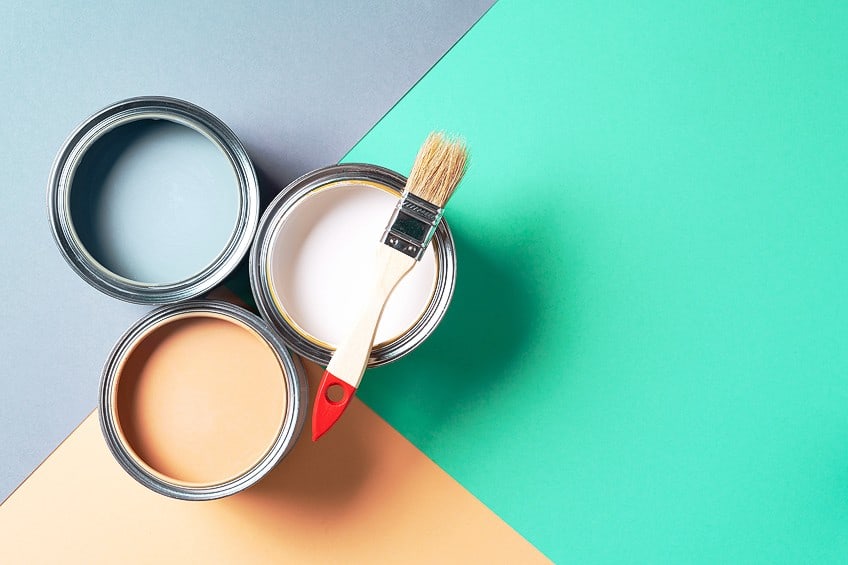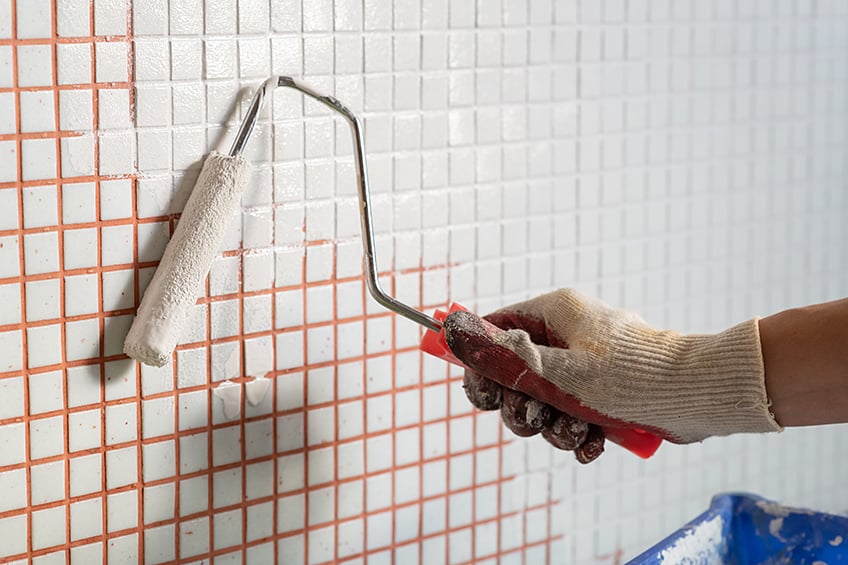How Much Paint Do I Need? – How to Choose the Right Amount
This post may contain affiliate links. We may earn a small commission from purchases made through them, at no additional cost to you. You help to support resin-expert.com
Choosing the right paint for your project can be challenging, but what can be even more challenging is ensuring that you have enough paint to get the job done. The answer to the question, “how much paint do I need?”, can vary considerably depending on a number of factors. However, there are ways to accurately calculate how much paint you need and how far a given amount of paint will stretch. Let’s have a look at how much surface area certain amounts of paint will cover, and how you can ensure you always have the right amount of paint for your project!
Table of Contents
Why Is Knowing How Much Paint You Need Important?
Paint is like any other tool, if you don’t have the right tool for the job (or the right amount of paint in this instance), your workpiece could have a less-than-desirable finish. Therefore, asking, “How much paint do I need”, can save you a lot of time, effort, and money down the line.
Here are a few reasons you should always ask yourself how much paint you need before you even prepare your workspace.
You Could Get Too Little Paint
When most people consider the amount of paint they’ll need, this is arguably the most common reason. If you’ve never been in this position, there are few things worse than getting three-quarters through a paint job only to realize that you have run out of paint. This scenario can leave you with the task of getting more paint before your current paint dries.
The problem with this is that should you take too long your initial coat could dry up and this could make it exceedingly challenging to blend the parts that are yet to be painted in with the parts that have been. That being said, it’s always best to make sure that you have enough paint to cover your intended surface beforehand.
You Could Get Too Much Paint
Okay, between having too much paint and having too little paint, having too much paint is the ideal scenario to find yourself in. Having too much paint simply means that you’ve spent too much on the projects and that you’d likely need to find a place to store all of the leftover paint.
As you can imagine, this is far less of a hassle than rushing to get painted before the paint you’ve applied has dried.
Having too much paint can present some other problems though. Some paint types have to be stored in specific conditions, or you could risk the paint’s parts separating, leaving the paint unusable. This is why it’s important to ensure that you know how much paint you need for the task at hand before you make your purchase.
You Could Need to Apply More Than Once Coat
Measuring the space you are in and determining how much paint you need is all well and good, but you need to ensure that you have enough paint for all of the coats that you intend to apply. Some surfaces definitely require more than one coat of paint, so running out of paint once your base coat has been applied is something you’re likely to want to avoid.
The best way to ensure this doesn’t happen is simply to research the material you intend on painting and to ensure you have enough paint to get the job done. Remember that all materials have a different porosity, and therefore even if they have been primed correctly you could very well need to add an extra coat of paint.
Understanding Paint Coverage
The first step to knowing how much paint you need for a given project is to understand paint coverage as a whole. That’s why we’ve prepared a short list of what paint coverage entails and what you need to know about it.
Keep in mind that different types of paint have different properties and therefore some of these following may not apply to the specific paint you’re using.
What Does Paint Coverage Mean?
If you’ve been doing DIY work for a long time or you’re a professional painter this question might seem a bit silly, but some might be new to painting so we thought we’d help them out a bit. What does paint coverage mean then? Basically, paint coverage is a term used to describe the amount of paint needed to cover a given surface.
Coverage can change based on a lot of factors, including the viscosity of the paint, the porosity of the surface, and even the shape of your workpiece. Paint coverage is usually measured in square footage, as in how many square feet a certain amount of paint can cover. Again, this can vary considerably based on several variables, and coverage isn’t always a precise measurement.
What Factors Affect Paint Coverage?
As we mentioned previously there are many things that can affect the coverage of a paint. During the manufacturing process, companies can add and remove different substances in order to increase or decrease the coverage of a paint.
What these things are largely depends on the type of paint that is being made, but there are some common ones we can have a look at.
Surface Texture
Surface texture can greatly affect how your paint is able to spread across the surface of your workpiece. How does this work? Well, if your surface is smooth and flush your paint should be able to spread as evenly as possible as there aren’t any little contours for the paint to complete with upon application. The more contours (little bumps and indents) the less efficient the spread of your paint will be.
Surface Porosity
Different materials possess different degrees of porosity. What does this mean? Porosity refers to pores on the surface of the material, and how frequently these pores appear across the surface of a given material.
Porosity affects the coverage of paint as it affects how much paint is absorbed into the material and how much remains on the surface as intended.
The Quality of Your Paint
Paint quality is a huge factor to consider when it comes to paint coverage because the quality of your paint not only affects its viscosity and color quality but also affects how many coats you’ll need to apply to achieve a satisfying finish. The higher the quality of your paint, the less you will have to use, the greater your coverage. It’s as simple as that.
The Type of Paint You Use
This is a pretty broad point to consider, but different paint types (oil-based, water-based, acrylic-based, and even milk paint) spread differently. Their base components not only change their viscosity, but it also affects how these paints interact with materials.
Knowing what paint type is best suited for a material and how certain paints interact with certain materials can greatly improve your coverage.
Method of Application
The method of application can have a staggering effect on the coverage of your paint. Paint coverage is directly tied to how the paint is distributed, which means the more efficiently you apply your paint to the surface of your workpiece, the better your coverage will be. There are many methods of applying paint to a surface, but the two most commonly used are using a brush and roller, or using a sprayer.
Using a brush and roller is a good choice if you have a small, flat surface to paint and if you aren’t in too much of a hurry.
However, it is a largely inefficient way of applying paint, as paint gets absorbed by the nap of the roller and trapped by the bristles of the brush. Using either of these tools can also result in over-application depending on your skill level, decreasing your overall coverage. Sprayers are wildly more efficient, even if you aren’t super skilled at using one? Why? The paint is atomized and sprayed onto the surface of your workpiece, sometimes in micron-thick coats.
You’re therefore using less paint to cover the same surface as a brush and roller, increasing your coverage, regardless of the paint type you are using and/or the shape, texture, and porosity of your workpiece.
How Is Paint Coverage Calculated?
Knowing what factors affect paint coverage won’t help you much if you don’t know how much paint you need for a given space. Knowing how to calculate paint coverage can therefore save you a lot of time, money, and frustration.
This is why we thought we’d clue you into how coverage is calculated and how knowing this can benefit you in the long run.
How to Calculate Paint Coverage
If you think this is some complicated calculation, it really isn’t. All you need to do is calculate the surface area of your space and then divide your answer by the average coverage of a single gallon of paint which is 400 sq. ft. This should give you a pretty accurate idea of how much paint you will need to paint your surface. How do you do this in practice? First off, measure the length of all of the surfaces that you intended to paint. Once you have that measurement, measure the breadth of all the surfaces you intend to paint. In context, if you are painting a room, measure each wall from edge to edge, and then measure each wall from wall to ceiling. The calculation will look like this: Length x Breadth ÷ 400 sq. ft.
Example: Calculating How Much Paint You Need for an Interior Room
While this is super simple, it can still be overwhelming if you’ve never painted a room before, so we are going to break it down for you. The average size of a bedroom in the United States is about 11 feet by 12 feet. So, to calculate the surface area, we’ll say 11 ft. x 12 ft. = 132 sq. ft. Next, we take our 132 sq. ft. and divide it by 400 sq. ft. per gallon of coverage, and we get to 0,33 gallons per square foot.
This means that a gallon is more than enough for the average room.
Example: Calculating How Much Paint You Need for an Exterior Space
The same principle applies when it comes to painting an exterior space. You’ll need to calculate the square footage of your exterior space by measuring the length and breadth of each surface you wish to paint, and then factor in things like the type of surface you are painting (brick, shiplap, concrete, etc). Therefore, your formula will still be length multiplied by breadth divided by 400 sq. ft. will equate to the amount of gallons you will need per square foot.
Now, you will need to factor in a bit more paint considering the contours, recesses, and bumps that tend to accompany exterior walls, but if you are of the means, you can simply buy an additional gallon to cover all your bases (or half a gallon if your surfaces are relatively flush).
Choosing the Right Amount of Paint
How much does a gallon of paint cover? 400 sq. ft. (more or less), and you know that now! How does this help you? Well, you know that you can paint the average bedroom using just a gallon, but what if you don’t need to paint a space this big? Well, you could calculate how much paint you need, but paint is only sold in certain volumes.
How do you work around this? We’re going to show you a few things to consider to help you narrow down the amount of paint you need for most scenarios.
How Big Is Your Room?
Now that you no longer have to ask “How much does a gallon of paint cover” you know that you simply have to calculate the total surface area you need to cover, and you can judge how many gallons you need if you need a gallon at all. To Help you along, remember that paint is sold in:
- A quarter pint
- A half pint
- A full pint
- A quart
- A half-gallon
- A full gallon
- Five gallons
- 5 fluid ounces
What Type of Paint Are You Working With?
Different types of paint tend to have different viscosities. The coverage of a paint usually increases the thinner the paint, as it usually means the paint is able to spread out with ease. Paints that are less viscous require more effort to be spread out over the surface of your workpiece and therefore don’t provide as great coverage overall. This isn’t always the case, but thick paints tend to be oil-based paints, alkyd-based paints, and enamel-based paints. Thinner paints tend to be latex-based paints, acrylic-based paints, and even milk-based paints, depending on the quality.
Keep this in mind when you’re asking yourself “How much does a gallon of paint cover”.
Surface Texture of Your Material
We’ve covered this previously, but it’s worth mentioning twice. The texture of your surface will affect how easily you are able to spread your paint and how far the paint is able to travel across the surface. Highly textured surfaces create resistance when spreading paint, which means if you’re trying to maximize coverage, you might need to go with a thinner paint.
And that’s how you figure out how much paint you need for a given surface. As you can see, a lot of thought goes into calculating how much paint you’ll need aside from the size of the container you’ll be purchasing. Be sure to take as many variables into account as possible when working out how much paint you will need, and don’t forget to lay down a drop cloth and put on some gloves (and a face mask) before you get to painting.
Frequently Asked Questions
What Is the Average Paint Coverage Per Gallon?
On average, the paint coverage per gallon is around 400 sq. ft. While it is just a rule of thumb, there is truth to this figure. This means that you should be able to paint the average bedroom in the US with one gallon of paint and still have a bit left over.
How Many Square Feet Does One Gallon of Paint Cover?
Considering that the size of the average American bedroom is around 1132 square feet., you might be wondering how many square feet does one gallon of paint cover? The answer is around 400 square feet., which means that you should have more than enough paint to get the job done.
Is Paint Coverage Important?
Paint coverage can be extremely important depending on the application. If you are painting your bedroom at home, the stakes are pretty low, but when painting things like aircrafts every micron of paint counts to conserve weight, resources, and money.


